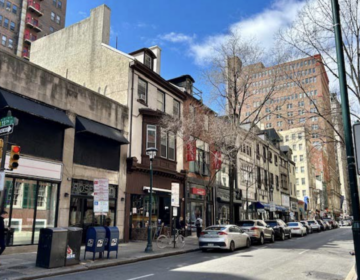Inquirer: USS Olympia seeks a new caretaker
Inquirer: USS Olympia seeks a new caretaker
During the Spanish-American War, Navy Commodore George Dewey stood on the bridge of the ship and uttered the words that became famous: “You may fire when you are ready, Gridley.”
The vessel’s mighty guns fired the first shots of the Battle of Manila Bay on May 1, 1898, announcing the United States as an international power.
The USS Olympia was the Navy’s state-of-the-art flagship, a source of pride for a country flexing its muscles.
More than a century later, this last surviving vessel of the Spanish-American War fleet and longtime Penn’s Landing attraction is looking for a new home and benefactor with deep pockets.
Its owner, the Independence Seaport Museum, can no longer afford the upkeep and it told the Navy it “will relinquish its stewardship of this national naval treasure and its valuable artifact collections,” said Peter McCausland, chairman of the museum’s Board of Port Wardens.
The museum seeks an owner who can pay up to $30 million to tow, restore, interpret, and endow the bedraggled-looking vessel.
Small portions of the Olympia’s half-inch steel hull along the water line have corroded to the point that only an eighth of an inch of thickness is left.
The hull must be continually monitored and is often patched, even as water leaks through parts of the deck into the interior, causing further rust.
“We don’t like to see the ship go, but you don’t want to sink the entire museum because of the cost of maintaining” the Olympia, said the Independence Seaport’s interim president, James McLane. “The museum is very financially sound, but if you put a drag on it, that puts it at risk over the next several years.”
For more than 13 years, the museum has been “a good steward” of the Olympia, McCausland said. “We’ve spent $5.3 million on her. We love her.”
But efforts to find funding from private donors and the city, state, and federal governments have failed, he said. The attraction will close in September.
“She’s not in imminent danger of sinking, but not far away from sinking,” McCausland said. “We could have a situation develop and then proceed downhill quite rapidly.”
Some sections of the hull “are exposed to air and water, air and water” as the tide rises and falls, speeding the rusting, said Jesse Lebovics, the museum’s manager of historic ships.
“There is a concern for the future. Once deterioration starts, it goes faster and faster,” he said. “The rubberized coating [on the deck] is eight years old. Water comes in, and that starts the rusting inside.”
The riverbed around ship must be dredged before the Olympia can be towed to drydock for new decking, hull repairs, and painting.
Cost of those basic repairs? At least $10 million.
An additional $20 million would be needed for interpretation to turn it into a first-class tourist attraction and for an endowment to pay for its future needs, museum officials said.
Unfortunately, a feasibility study showed that the museum would be unable to meet those funding needs in this economic climate, officials said.
“If we don’t have the resources to take care of the vessel, then someone who does will be better for her,” Lebovics said.
Finding an owner “willing and able to preserve and repair” the Olympia is the museum’s responsibility, said Glen Clark, deputy program manager for the Navy’s Inactive Ships Program in Washington. “The Navy does not own the ship.”
But the military has been “concerned about the condition” of the Olympia and it sent a letter to the museum in May asking for plans for drydocking, Clark said. “It’s a national historic landmark.”
The museum took over the one-of-a-kind ship Jan. 1, 1996, from the Olympia Cruiser Association, which had maintained the vessel with limited resources for 40 years.
The Olympia is the world’s oldest floating steel warship. It was used to carry the body of the unknown soldier of World War I from France to the United States in 1921, the museum said.
It was docked at the Philadelphia Navy Yard from 1922 to 1959, and was on display at Pier 11 at the Benjamin Franklin Bridge through the 1960s until 1976, when it was moved to Penn’s Landing.
The ship was authorized in 1888 and commissioned in 1895. It led five other U.S. warships into Manila Bay in late April 1898, and fired shots in the battle to wrest the Philippines from the Spanish.
The U.S. fleet – under Dewey’s command – destroyed 10 Spanish cruisers and gunboats in a few hours without losing an American life.
Today, the Olympia is a time capsule, filled with a collection of paintings, photographs, and artifacts.
It has been in the water since 1945, though historic steel-hull ships should be drydocked about every 20 years for maintenance. The deferred work makes restoration more costly.
“We will be rolling out our new strategic plan, connecting people in the region to the water,” McCausland said. “But we cannot take care of the Olympia and execute our plan.
“We’re very saddened by this, but it is what it is. We did our best.”
Added McLane: “It’s not what the museum wants to do. It’s what we have to do.”
WHYY is your source for fact-based, in-depth journalism and information. As a nonprofit organization, we rely on financial support from readers like you. Please give today.






